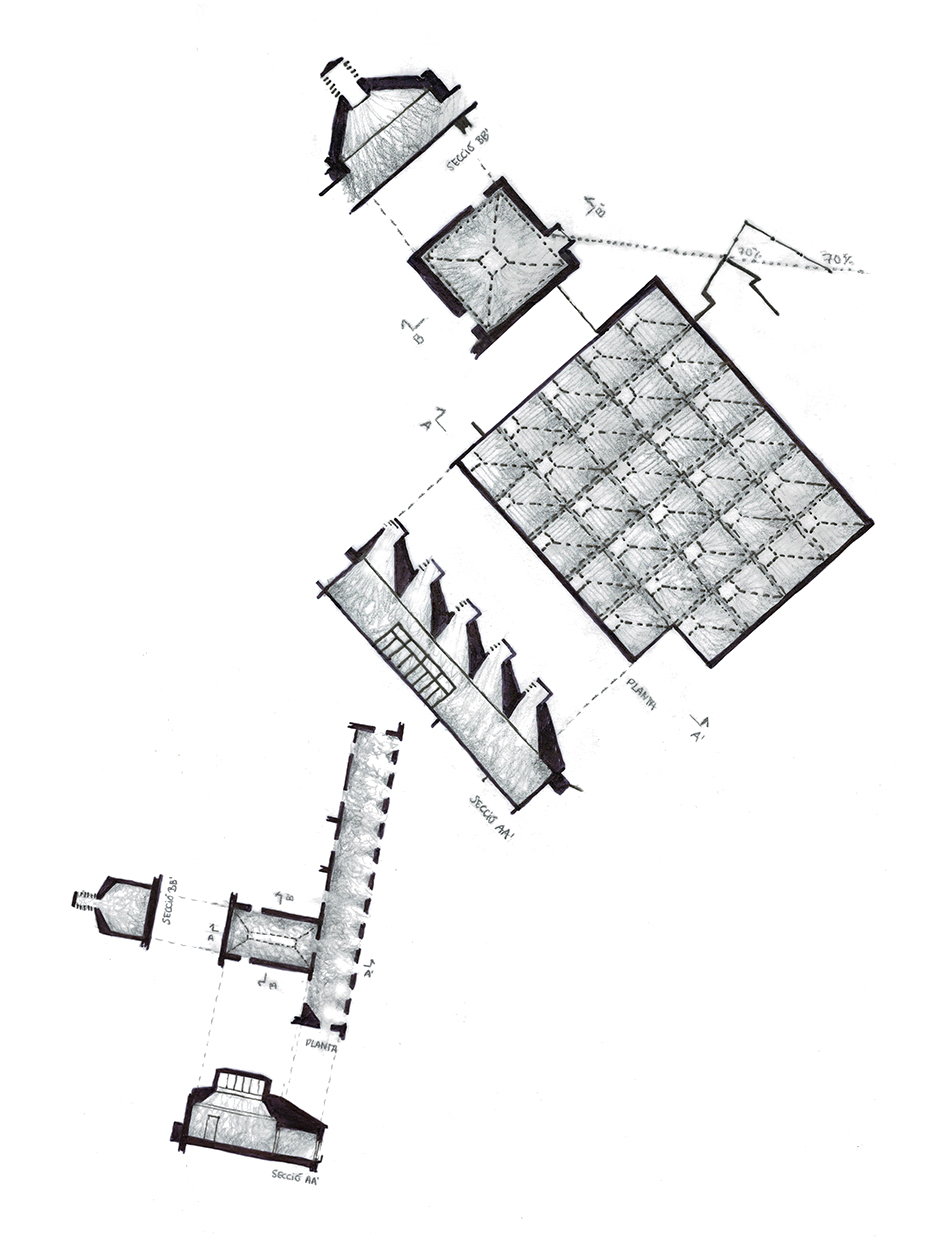Light as a project material in the museums of Rafael Moneo

Category
Daylight investigations - Region 1: Western Europe.
Students
Alba López Campmany
School
Universitat Politécnica de Catalunya
Country
Spain
Download
Download ↓
Living for a year under the Nordic sky further aroused my interest in natural light in architecture, an intangible matter with a high degree of complexity due to the fact that it changes throughout the day and the year, both in intensity and colour, and it influences everything in its path.
In the architecture of the museums, it is essential to have control over light in order to not damage the state-of-the-art works exhibited.
These institutions have evolved throughout history, changing the role of daylight as the protagonist of the museum. The origin of the museum is found in the ancient Egyptian civilizations, they displayed valuable objects during the funeral ceremonies in order to create a space that showed the presence of the deceased. Later on, the Greeks exhibited statues in the exterior as part of the architectural experience, so the monuments were under the natural daylight. The Romans exposed their possessions in Palaces or in the gardens of luxury villas. During the Middle Ages, valued objects needed to be for God, so they collected them behind a fence in a chapel. It is not until the late 14th century, that the objects were considered to be contemplated instead of being something to possess. At that moment, the aristocracy decided to show their possessions. Those spaces were characterized to have low openings and inadequate natural light. On the other hand, in the baroque the light had an important role in order to show the objects. During the 20th century, researches tried to quantify the damage that natural daylight could produce over paintings. Despite the fact that artificial light started to transform the museums, there were architects such as Le Corbusier, Alvar Aalto, Louis Kahn, Frank Ghery and others that designed museums in which daylight was an important element.
The intention of this research was to investigate and observe daylight in two museums, the Thyssen-Bornemisza Museum in Madrid and the Modern Art Museum in Stockholm with the aim of reflecting on how light in a place changes the way of building for Rafael Moneo and how is he influenced by the light conditions of the environment when he builds under a museum program.
These two museums were chosen because of its location under two different skies. Moreover, they both were built in a short period of time by the same architect, and they seemed to have some similarities regarding its resulting space.
The Nordic light is characterized for being diffuse most of the time due to the cloudy days, the low inclination of the Sun during the winter and I also felt that the sunlight was less intense.
In Spain, I always tried to protect myself from sunlight with solar protections such as blinds, trees, outstanding elements… For those reasons, and being concerned that in the architecture of museums daylight badly affects over paintings, I thought that it would be easier to protect the objects exposed from sunlight under the Nordic sky.
After experiencing myself both museums and analysing the characteristics of both climates regarding daylight, the environment, the pre-existences of each project, the orientation, the openings, the materiality… I realized that my hypothesis were wrong.
These two museums that I first thought that were similar, they turned out to be quite different when I studied them in terms of light.
Regarding the openings, the Thyssen-Bornemisza Museum had plenty of lateral openings, and they all were blinded. On the other hand, the Moderna Museet only had four lateral windows in the exhibition halls, but they allowed the view outside, so the Stockholm’s landscape became part of the art-works exposed in the room.
When I observed the zenith openings, I realized that is more difficult to design under the Nordic sky than in Spain. The main reason why is the long solar path during the summer in Stockholm. This fact makes it extremely difficult to control sunlight during the season when there are less cloudy days. It also affects on the architectural design the variability of the inclination of the Sun throughout the year. For those reasons, the openings in the Moderna Museet in Stockholm are smaller and have solar protection in all its faces.
Finally, I wanted to highlight my disappointment on how the experience in the museums is currently changing without daylight. They are becoming boxes where people can not feel the passage of time outside. I would like to praise with this research the natural light in the museums as a project material that can change the atmosphere, so the experience of the visitor will not be the same in the morning or in the afternoon, during winter or summer, under a sunny sky or a cloudy sky, in Stockholm or in Madrid.

































